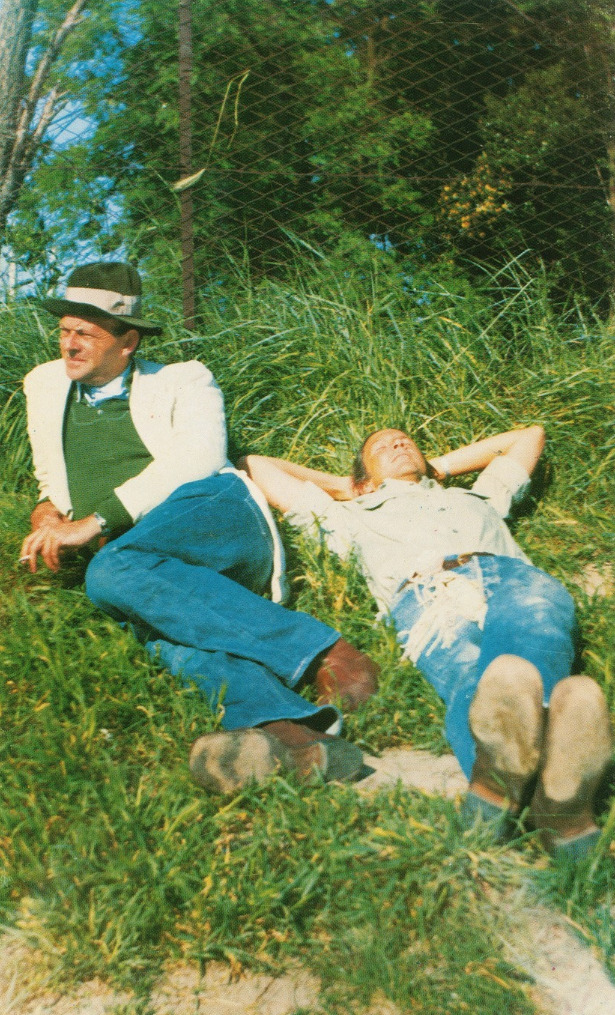
Bob Petersen: …is Columbia doing Cy Twombly?
Q: I don’t know. There’s a gallery at Columbia, but I don’t know.
Petersen: The oral history of Cy Twombly?
Q2: He died before—
Petersen: God, I have tons of stories from Cy.
Q: Oh, you mean as an oral history subject?
Petersen: Yes, right, just to record. God, Cy and Bob were of course so close.
In 1970 Robert Rauschenberg, 45, moved to Captiva, a Florida island only then only reached by ferry, and Gemini GEL printer Bob Petersen, 25, moved with him. They lived on the beach side of the wild, 16-acre property Rauschenberg had assembled, and eventually set up an experimental print foundry, Untitled Press, in a house on the other side. That’s where a bunch of artist friends stayed, including Cy and Nicola [that’s not in the Chronology], who started coming during the winters from 1971 through 1975.
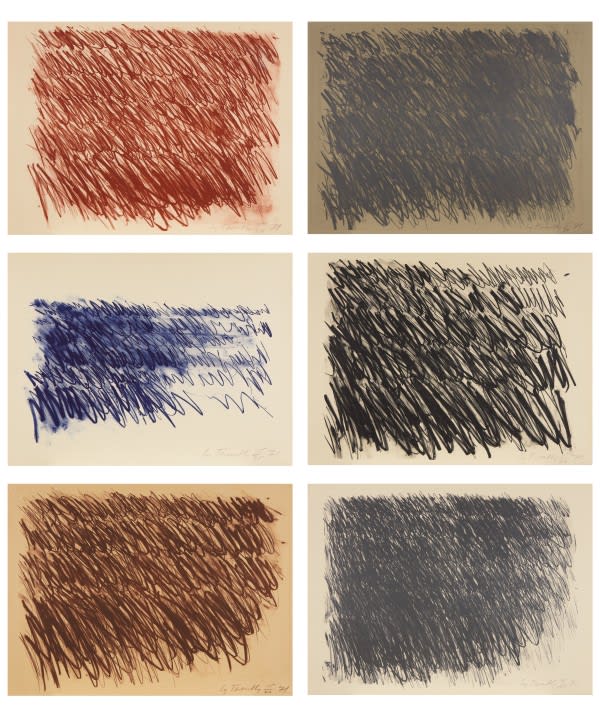
Peterson took the photo up top of Cy and Bob chilling. At Bob’s behest one year, he also took Polaroids of Cy working, which seems rare. (The photos, not the working. Ever since he took those pictures of Pollock, most male artists wanted Hans Namuth to photograph them at work. He photographed Rauschenberg often, and made that feet pic of Johns in 1962.
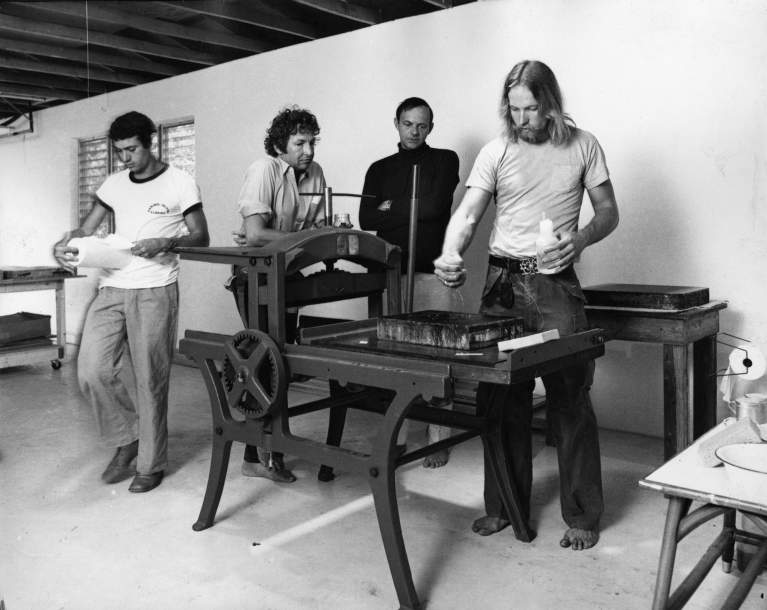
Namuth was the fifth guy in the Untitled Prints house for this 1971 photo, maybe a bit of PR for the foundry, which may be the only time he photographed Twombly. Again with the feet. Rauschenberg’s studio assistant Hisachika Takahashi’s stories of Captiva are as great as Namuth’s photo of his son.]
Anyway, Petersen’s photo was printed on postcards for the invitation to the opening of Twombly & Rauschenberg’s two-person show at Castelli in May 1974.
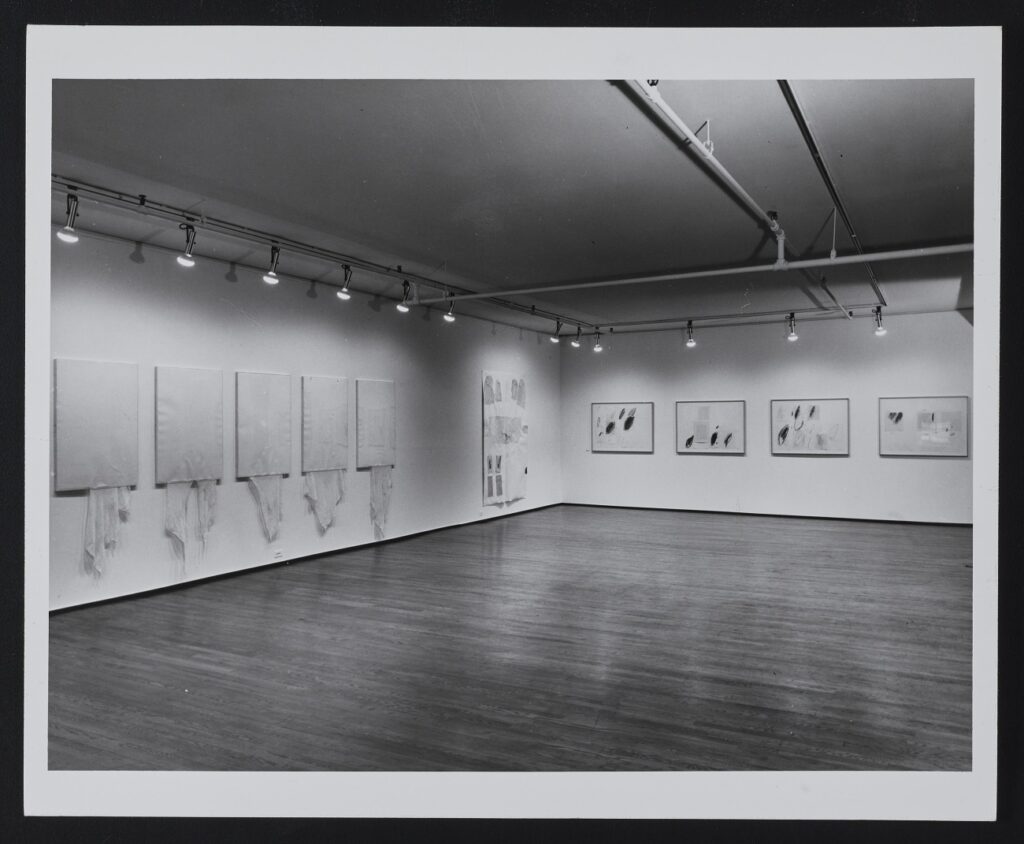
There seems to be no checklist for the show, only some installation shots. Rauschenberg showed works from series he’d just made in Captiva: Early Egyptian works were seemingly monumental block sculptures of sand-coated cardboard, with day-glo paint reflecting on the wall sides. Two other series involved using the press to laminate objects together: for Pyramid works it was pieces of cheesecloth used in print studios for cleaning stones. for Tablet works it was pieces of cardboard. In each case, the aesthetic effect is flatness thwarted by an object collaged/attached/inserted.
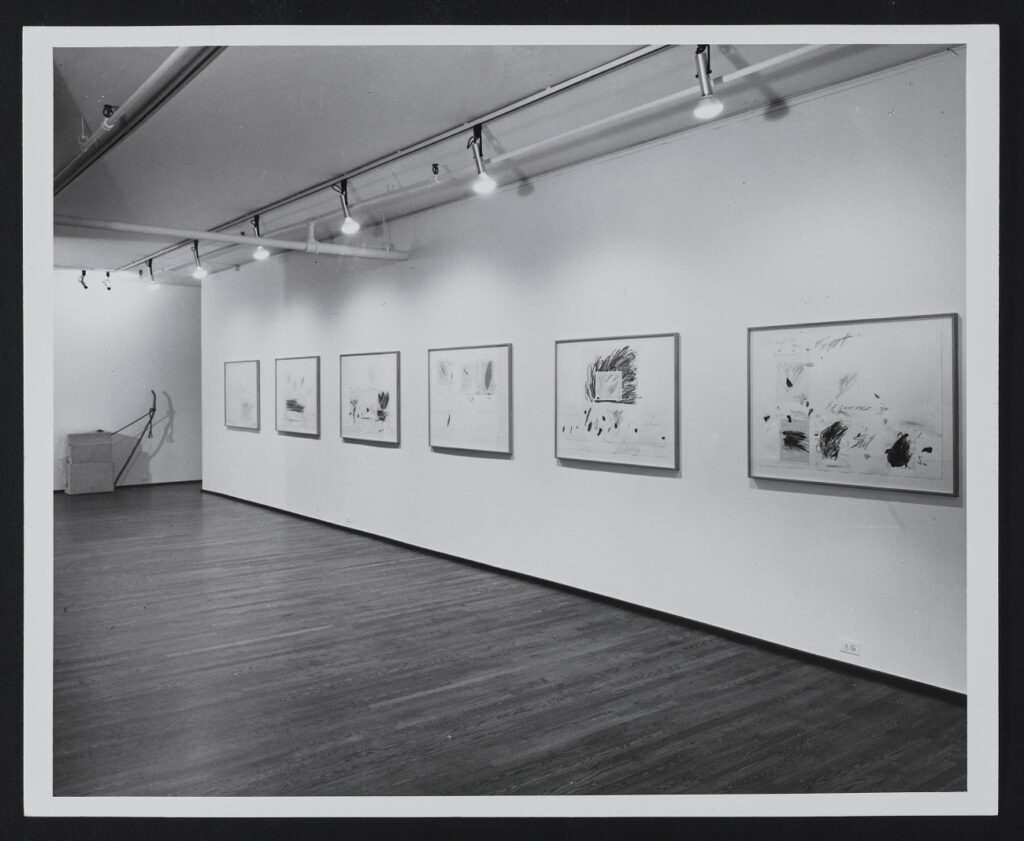
Speaking of collaged, someone’s foundation website has no information, but Twombly’s works on paper look like collaged drawings similar to Untitled Captiva Island (1972) which he showed in 1976 at the ICA in Philadelphia. That one has a tourist postcard affixed. [Few days later update: via the CR, it’s a postcard of large seed pods papayas* in a tree. These pods appeared in many of the drawings Twombly made in Captiva in ’72 and most from ’74. The group above have a lotus flower motif and some reference SESOSTRIS II, an Egyptian pharaoh. The drawing below turns out to be on the back of a leftover lithograph proof from ’71.]
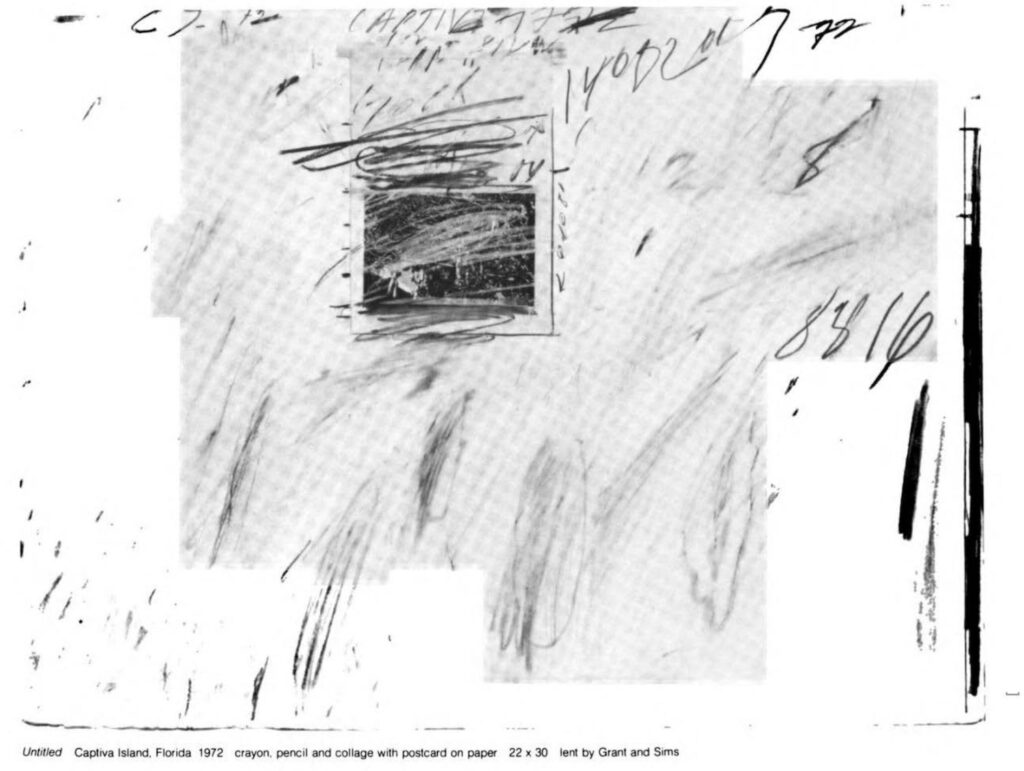
Petersen’s oral history for the Robert Rauschenberg Foundation was produced in 2014-15 under the auspices of Columbia University. He spoke five times with six different interviewers in various combinations, and his photo of Twombly & Rauschenberg feels of a piece with his account of living and working with them.

Before Captiva and the rest of the decade, Petersen and Rauschenberg shacked up in Malibu, where they created Currents, Rauschenberg’s gargantuan print project made from collages of newspapers, with no ruminating or explicating, just constant work:
Q: In some of the interviews that are in the Foundation website, [RR] describes the [Currents] series as, “an active protest attempting to share and communicate my response to and concern with our grave times and place. Art can encourage individual conscience.” So that implies that there’s a very clear political responsibility in responding to current events and the news.
Petersen: I lost my breath there. Oh god, what a genius, this guy. I’m getting emotional.
Q: Well, it’s almost—it’s powerful in a different way, that he wouldn’t—
Petersen: I was there, you know? He didn’t say anything. He didn’t say anything. He just did his work. Anyway. He never really described—he didn’t say let’s do this, let’s do that. There was—I don’t know. In Malibu we didn’t have a TV, I don’t believe. That was with Currents. We didn’t have a TV, only the newspapers. And the puppies. The puppies kept us busy.
Then they took the ferry to the island compound in the Gulf of Mexico. The minimum order for the paper used to print Currents was so big, there were still four massive rolls left in Captiva in 1974.
[morning after update] I left it out last night, but this really does feel like as good a place as any to spotlight Petersen’s story of Rauschenberg introducing him to Barnett Newman in the MoMA sculpture garden on what turned out to be the night before Newman died, July 4, 1970:
Petersen:…In the garden, yes. Bob introduced me to Barnett Newman and standing right next to him was Jasper Johns. Like just right there, standing. And Barnett Newman. Bob said, “This is Bob Petersen. Bob, Barnett Newman,” you just shake hands, that’s about it. In a way. Well, I was very pleased to meet him. Jasper was there, and Bob turned and introduced me to Jasper. But I knew Bob and Jasper’s relationship, and he probably in a way sensed our relationship. So Bob introduced me to Jasper. I don’t know if you’ve ever looked Jasper Johns in the eye, made eye contact. [Laughs]
Q: I can’t say I have.
[Laughter]
Petersen: But Bob introduced me and then he turned and got involved with the—so I’m standing there alone with Jasper. I looked at him and I just froze. I just went—[laughs] because he looks right through you. He just looked and that was it.
[Laughter]
Petersen: Then I said, “Nice meeting you,” and turned away.
- in the 1975 ICA catalogue, I think it’s Suzanne Delahanty who calls these seed pods, but that did baffle me, and then Takahashi’s oral history referenced papayas growing wild on the property, and that makes so much more sense, both for a postcard subject and a drawing subject.
